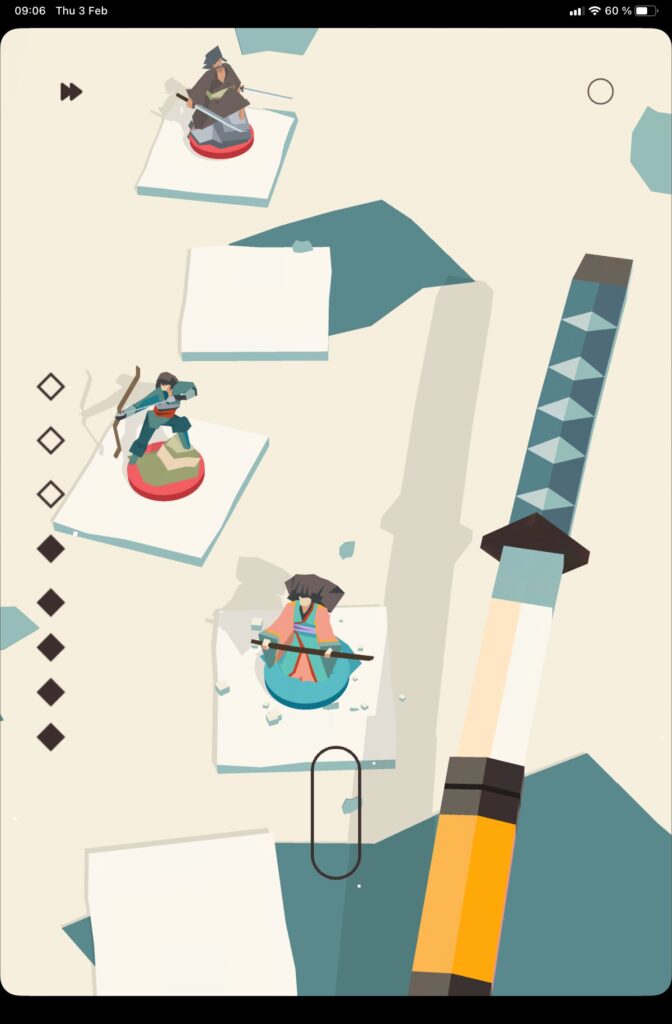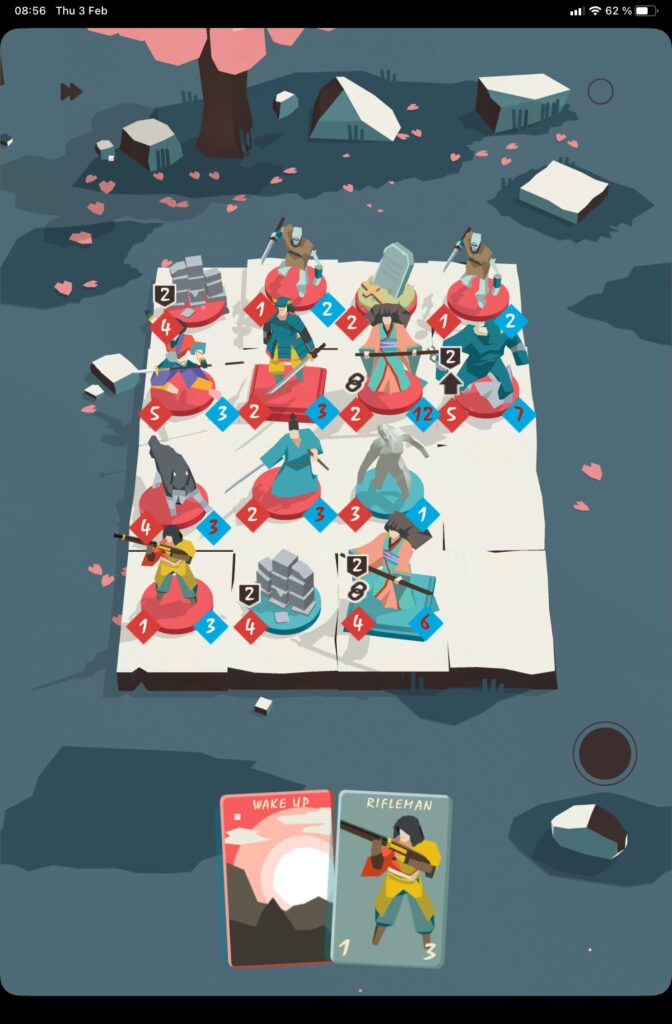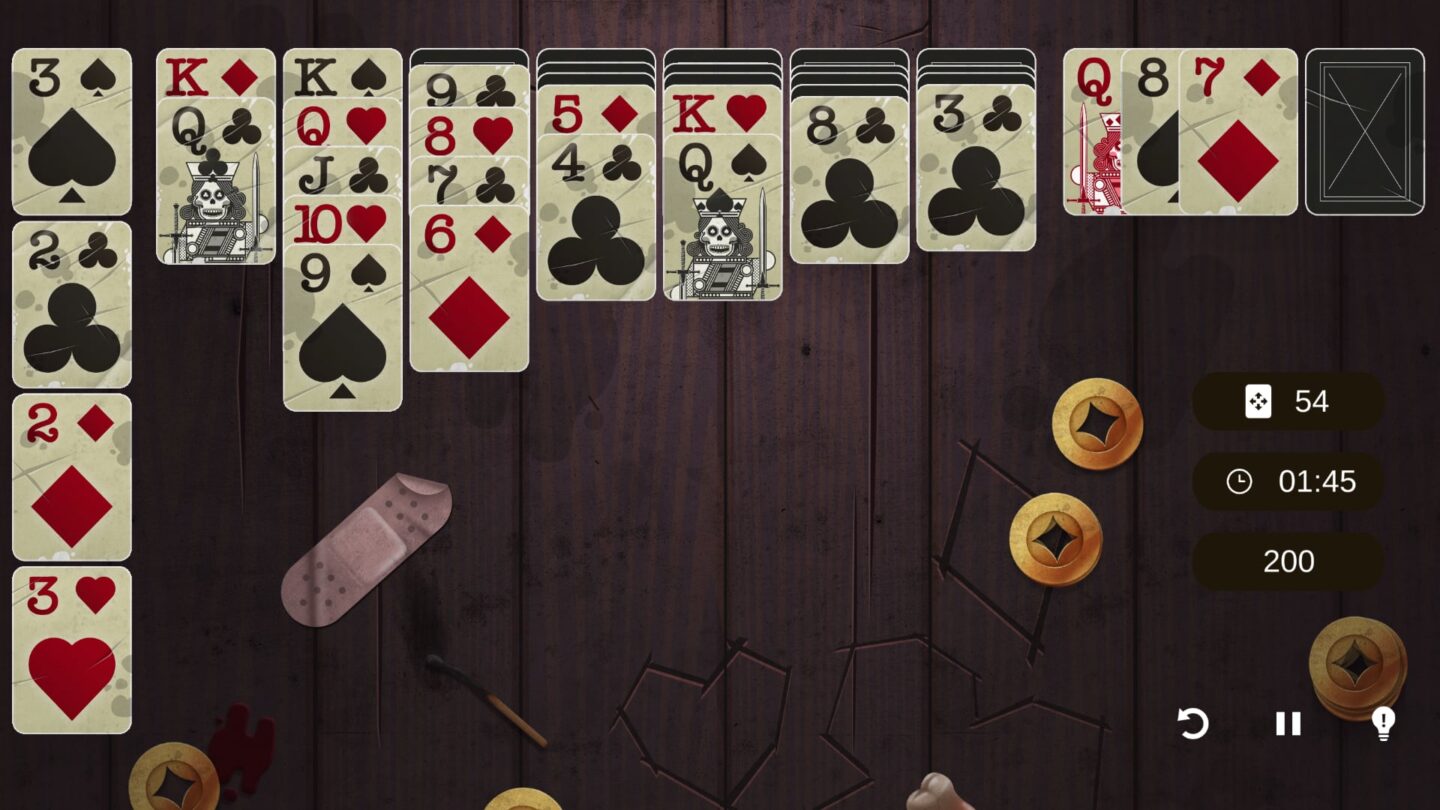I’ve been spending the better part of the week recuperating in bed, and what better companion than an iPad mini with some games on it? One of the games I’ve been playing is Miyamoto, a digital strategic board game meets roguelikes, something I think work pretty well on tablets overall.
Miyamoto is easy to get into, if you give it a chance because it sure won’t help you. There are no tutorials or any on-boarding at all, it’s just a title screen with a couple of game modes. Granted, the game asks you to swipe up – open the box, as it were – which throws you into its ladder-style view.
Now, I’ve played my fair share of board games of the years, so this was neither scary nor difficult for me, but I’m sure the game lost a few players right away. That’s a shame because Miyamoto is something you should give a shot.


You play pieces on the game board. Most pieces can only move and attack one or two squares, but there are outliers. You can’t move diagonally, nor attack that way, although there are effects that will harm pieces nearby. That means that your piece, a samurai warrior for example, must stand next to its enemy to attack. The same goes for pieces that buff the stats, it’s usually things that apply to nearby pieces. Where you place a piece matters a lot, in other words, and just to complicate things further, you can only place a piece next to an already placed piece.
All pieces on the board have a life value, and most have an attack value. The attack value, when attacking, is what’s subtracted from the health value. Simple enough, right? Well, different pieces buff these values under certain circumstances, and then there are the effects. Because, you know, this is a card game, too. You get three cards each turn, most are pieces you can place on the board, but some are effect cards that’ll buff your pieces. Drag and drop, move, attack, and do all those things in the right order because it’s key when you get further up the ladder.
Speaking of the ladder, you’re moving your main piece, your captain if you will, on there. When the captain dies, you loose, and when you kill your enemy’s captain, you win. The further up the ladder you get, the more overpowered the captain is. Luckily, you get gold pieces when you win so that you can unlock other captains, with other skills and bonuses. Unlocking new captain pieces makes it a bit easier, but also changes how you need to play the game. Expect to grind a lot to get all of these characters, including the titular Miyamoto.
Now seems like a good time to remind you that Miyamoto is a premium release, albeit cheap at $3. There’s no pay to win here.
If you get bored with playing against the computer, you can go head-to-head with an actual living person as well. Not online, unfortunately, but across the table, which works just fine.
I like Miyamoto, it’s a nice little board game. It does get a bit repetitive, and you’ll get annoyed at times, if the pieces you need won’t show up, and the computer slams you with demons and princesses. Still, it’s enjoyable, and if any of this sounds interesting to you, I think you should pick it up.
🗡🗡🗡🗡 out of 5 — Great!
Miyamoto is $3, with no in-app purchases.





